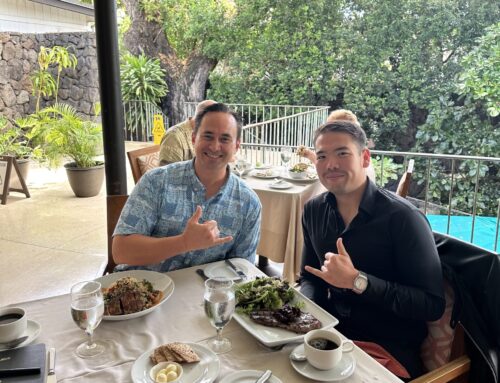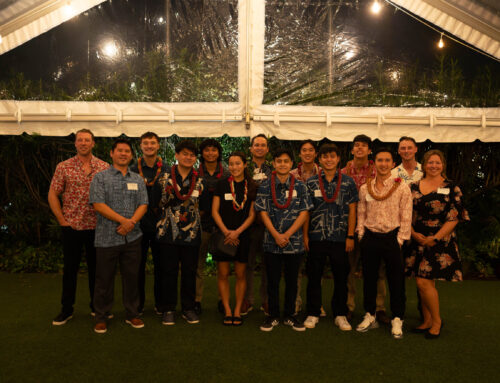
What draws teens to a particular scholarship application? Promoting products and services to teenagers requires different strategies than reaching adult audiences. Whether trying to sell shoes or encourage a high school student to apply for a scholarship, creating personas can be a helpful way to understand the teen market segment.
Understanding Personas
A persona puts a face on a large group. It gives you a clear picture of a typical individual in a crowd. There is approximately 25.6 million youth between 12 and 17 years old. Don’t treat this group as a large, undefined mass. Persona development can help make each student real.
Discover how some careful research, creativity, and empathy can craft personas. These help companies connect with their prospective audience. If you’re seeking to connect products, services, or marketing messages with your target audience, personas can help.
Market Segments
Market segmentation is a popular business and non-profit organization strategy for learning more about a particular group. The sheer number of people who interact with your brand, product, or service makes it difficult to get a clear picture of your entire audience, so segments help you learn more about smaller, more manageable groups. This will help find where you can reach the audience you need to hear about your scholarship.
A popular form of segmentation is creating demographic segments. Demographics can include any number of non-character traits. Use segmentation to isolate teens who will be interested in your scholarship. For even more specific information, consider creating smaller demographic groups to survey how various types of teens interact differently with the same service or marketing message.
Value of Using Personas
Creating a persona for a market segment allows you to know the motivations, struggles, aspirations, and pain points of a particular segment. Regarding teens looking for scholarships, this means finding out how they search for applications, what applications they complete, and what factors discourage them from applying.
Creating Personas
A reliable persona is based on research, not intuition. Don’t assume you understand what a particular market segment likes, thinks, or believes, particularly if you’re not a part of that segment. Conduct relevant user research to better understand teens and identify demographic differences.
Teens as a Market Segment
One of the most popular ways to identify and explore teen behavior insights is through online research. By understanding how teens spend their time online, researchers can determine the best ways to connect them with relevant products and services.
Here are some key statistics that can help you get a clear picture to craft a teen persona:
- As many as 45% of teens report being online almost constantly
- TikTok, Instagram, and Snapchat are the most common social media apps for Americans under 30
- A majority of social media users frequent platforms daily
From these and other statistics, some general statements are made to help create a market segment and persona. While not true for every teenager, here are some examples of statements that may be true for a large portion of this demographic:
- They prefer real-time, personalized content
- They prefer interacting and communicating, not just listening
- They want to spread information on social media
- They want to share thoughts and feelings
These statements can be used to create a persona, or more than one persona, of a typical teenager who may be interested in your scholarship. The above statements were created from general research on teens across the United States, but you should try to collect data from your specific audience.
For example, scholarship applications targeting athletic high school juniors and seniors won’t apply to the entire market segment. You need to conduct your own research to find answers to the habits, aspirations, and preferences of your target group before creating personas.
Transform Data Into Personas
You need clear, relevant data to craft a persona, but you also need to know how to transform the data. You will likely see different trends in the data. For example, some teenagers may prefer one social media platform over another. Use these differences to create multiple personas.
Aim for between three and five personas to avoid over-generalizing your audience. Condense the information, name each persona and refine it until they are identifiably different from each other. Here are some popular items that are used to build a persona:
- Fictional name
- Demographics
- Environment information, particularly social, physical, and technological features
- Goals for your product or service
- Summary quote
Your goal isn’t to create a caricature about a particular demographic or market segment. Instead, your personas should highlight different sub-groups of teenagers and how you may be able to assist them with a particular problem.
Marketing Scholarships to Teens
An estimated 1.7 million private scholarships are awarded to prospective and current college students. These numbers have been dramatically growing, but so have the costs of attending college.
The cost of attending college in 2020 ranged between $26,820 and $54,880. To continue to assist students in attending highly rated schools and affording tuition, scholarships need to be marketed to teens effectively.
These research-based youth marketing tips are examples of ways effective surveys, market segmentation, and persona creation can improve a marketing campaign:
- Use text message advertising
- Create interactive opportunities to increase engagement
- Provide feedback and communication opportunities
- Use trending social media platforms
- Work with campus representatives
These solutions need to be refined for your personal audience. Don’t assume they can be applied in a general way and still be successful.
Takeaway Points for Creating Teen Personas
Persona creation is an ongoing process. Because market research focuses on such a small age range and deals with ever-changing technology trends, you can’t expect old research to continue to apply to your prospective audience.
Continued research and refinement of personas allows for a flexible, relevant marketing strategy. Whether adjusting the wording of advertisements or seeking new communication channels with teenagers looking for scholarships, ongoing research keeps companies connected with teenage audiences.




